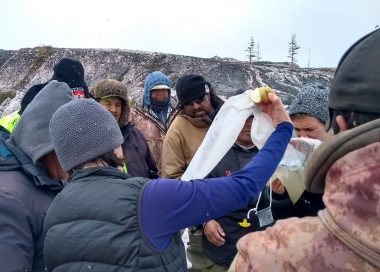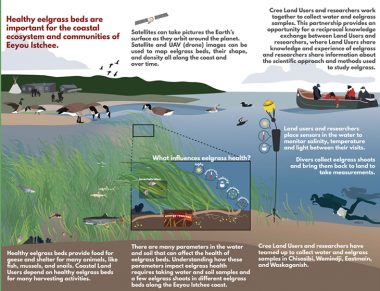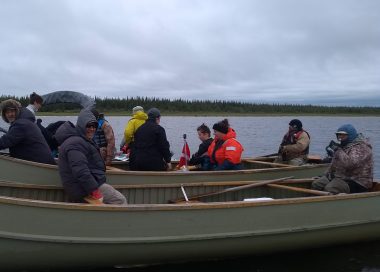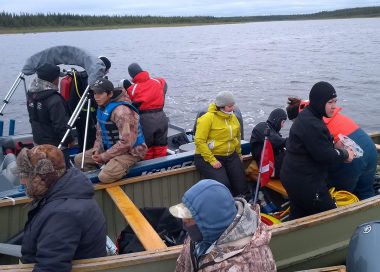Working in collaboration with the coastal land users, the eelgrass team aims to better understand the environmental factors affecting the growth and health of eelgrass, and evaluate the current and past distribution of eelgrass meadows.
Eelgrass Study
Eelgrass meadows are an important component of coastal ecosystems, providing habitat for fish, such as cisco and whitefish, and food for migratory waterfowl such as Canada Geese and Brant. Eelgrass health is influenced by many environmental factors like temperature, salinity, nutrients, and light. When these conditions are optimal, eelgrass can form large meadows under the water, which range in size from small patches to many hectares. Indicators of health in eelgrass meadows include eelgrass shoot size and density, signs of recent productivity in rhizomes and shoots, and physiological condition characterized by the quantity of some elements in the leaves and roots. Healthy eelgrass meadows are also characterized by diverse epiphytic algae in moderate or low standing stock, and the presence of many different species of invertebrates, fish, seabirds and waterfowl
Objectives
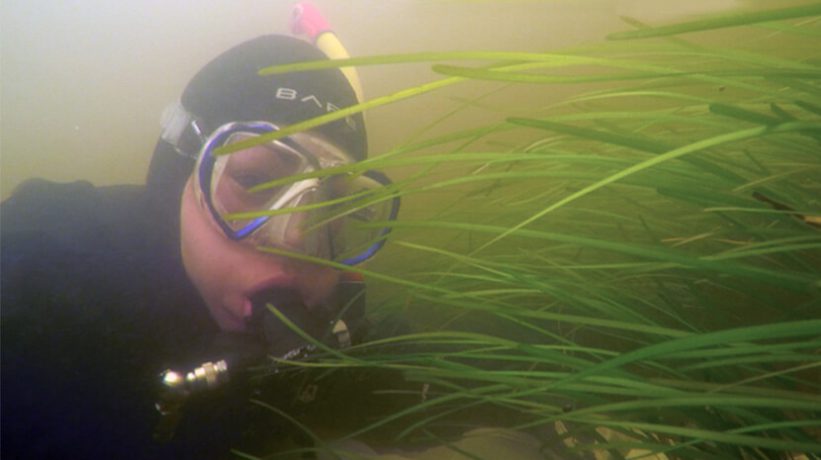
Methods
Understanding what is affecting eelgrass health requires numerous trips with land users to various locations along the coast. At these sites, we conducted underwater SCUBA surveys to collect eelgrass shoots, sorted the invertebrates that live in eelgrass meadows, and measured various water quality parameters such as salinity, temperature, turbidity and nutrients.
Additional eelgrass samples were collected to study the physiology of eelgrass by quantifying some elements as pigments contained in the leaves or reserves stored in the roots.
Team Members
This work was carried out by field assistants and graduate students under the supervision of University of British Columbia professor Dr. Mary O’Connor, Université du Québec à Rimouski – Institut des sciences de la mer professor Dr. Fanny Noisette and McGill professor Murray Humphries. Field visits were also performed on various coast and inland sites to interpret the satellite imagery in order to evaluate the eelgrass distribution. Researchers leading the mapping component of the project are University of New Brunswick professor Brigitte Leblon and researcher scientist Dr. Armand LaRocque.
Links to Other Components
The University of New Brunswick team is also evaluating the relationship between forest fires and turbidity along the coast using satellite imagery. Although local conditions can impact eelgrass, eelgrass health is also influenced by large scale oceanographic patterns, riverine inputs and weather conditions – so it’s important to evaluate how all these aspects together influence eelgrass
